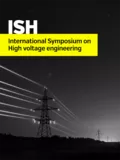Summary
The integrity of solid insulation in high voltage system is an important factor to be considered in maintaining the normal operation of the equipment. Thus, this investigation presents partial discharge measurement in artificial defects in epoxy insulation. The test object was modelled with artificial defects consisting of beads with different cavity shapes in the epoxy to measure and evaluate partial discharge activity. oDcifcfeurrerinntg e ixnp seorilmide inntssu wlaetiroen m caadne b feo rc phaarrtaiacl tdeirsizcehda rbgye amt etharnese odfe tfheec ts phoaspiteio onfs tihne t hpea ertpiaol xdyi.s cPhaarrtgiael dpiasctthearnrg feosr the specific defect, viz spherical, ellipse, cracks in the insulation and delamination on interfaces with electrodes. The location of the defect in relation with the distance from the high voltage electrode or earth electrode also connoted in the pattern displayed. The last variable that determines the final pattern is the number of discharges occurring over a specific time, or which can be given as the rate of discharge in the sppaertciaifli cd idsechfeacrtg. eA mnaalgynsiistu dwea s(q d),o pnhea ussei nogf pthaert iaplh daissec-hraersgoelv oecdc murereanscuere (mFe) natn pdr ipnacritpialel dwishcichha rdgeet enrumminbeesr (tnh)e. It was observed that, the patterns are nearly identical in shape and phase position related to the test voltage. Henc
Additional informations
| Publication type | ISH Collection |
|---|---|
| Reference | ISH2017_286 |
| Publication year | |
| Publisher | ISH |
| File size | 659 KB |
| Pages number | 6 |
| Price for non member | Free |
| Price for member | Free |
Keywords
Phase-resolved, Insulation, Epoxy, Partial Discharge, Modelling



